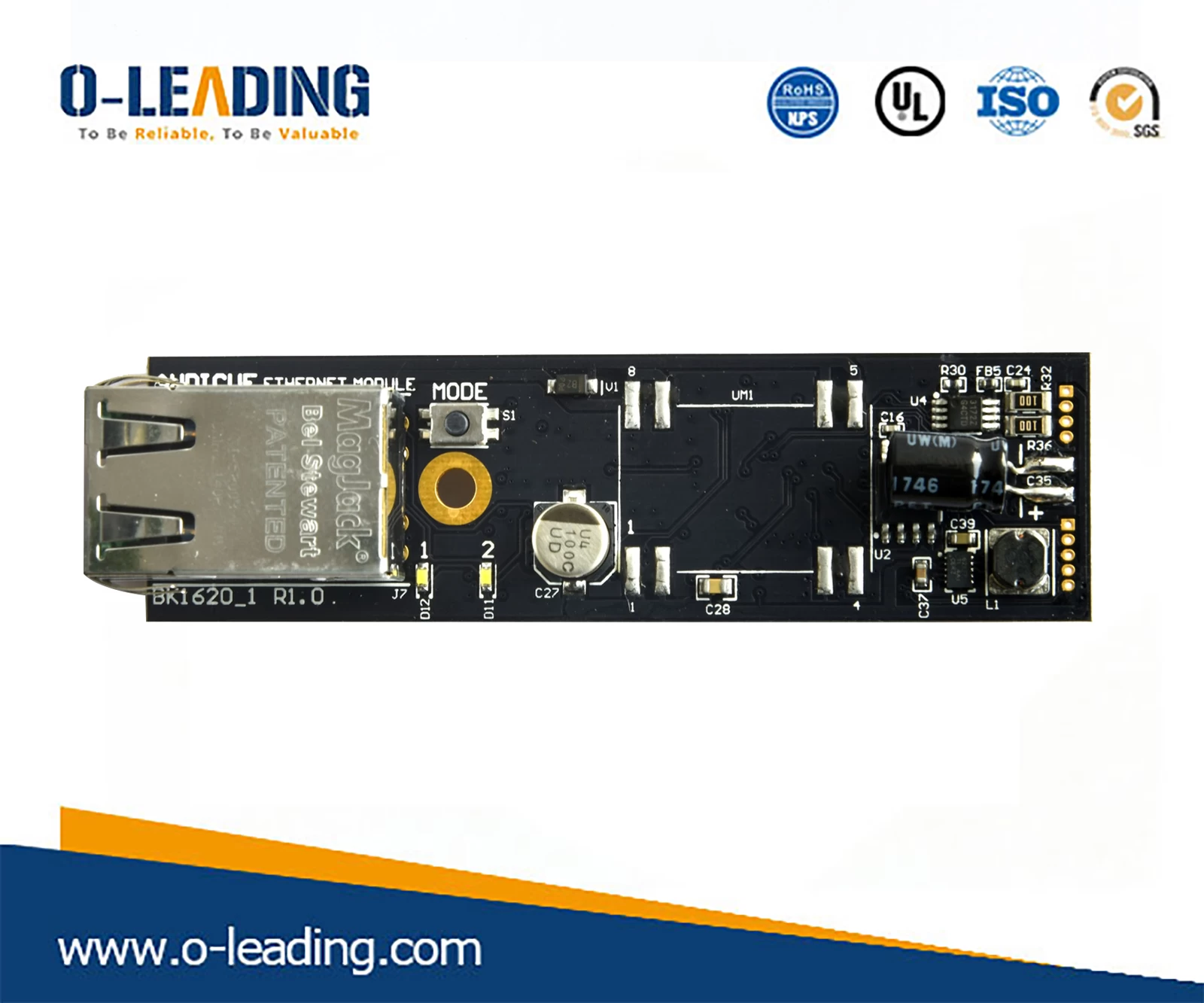Why does PCB copper wire off occur?
First, the PCB factory process factors:
1. The copper foil is excessively etched.
Electrolytic copper foil used in the market is generally single-sided galvanized (commonly known as ash foil) and single-sided copper plating (commonly known as red foil). Common bismuth copper is generally galvanized copper foil of 70um or more, red foil and 18um. The following ash foils have basically not been subjected to batch copper beryllium. When the circuit design is better than the etching line, if the copper foil specifications are changed and the etching parameters are not changed, this will make the copper foil stay in the etching solution for too long.
RoHs Compliant manufacturer china.

Since zinc is originally a reactive metal, when the copper wire on the PCB is immersed in the etching solution for a long time, the side corrosion of the line is excessive, causing some thin line backing zinc layer to be completely reacted and detached from the substrate, that is, The copper wire is off.
There is also a case where there is no problem with the PCB etching parameters, but the water is washed and dried poorly after etching, and the copper wire is also surrounded by the etching liquid remaining on the surface of the PCB. If it is left untreated for a long time, the copper wire is excessively etched. copper.
This kind of situation is generally concentrated on thin lines, or when the weather is wet, similar defects will appear on the entire PCB. The copper wire is peeled off to see that the color of the contact surface with the substrate (the so-called roughened surface) has changed, and the normal copper The color of the foil is different. The color of the original copper is seen. The peeling strength of the copper foil at the thick line is also normal.
3D printer PCB supplier.

2. Local collision occurs in the PCB production process, and the copper wire is separated from the substrate by mechanical external force.
There is a problem with this poor performance positioning, and the peeling copper wire will have obvious distortion or scratches or impact marks in the same direction. Peel the copper wire on the bad copper strip to see the copper foil surface. You can see that the copper foil surface is normal in color, there will be no side erosion, and the copper foil peeling strength is normal.
3. PCB circuit design is unreasonable.
Printed circuit boards supplier.
Designing a thin line with thick copper foil can also cause excessive etching of the line and copper.
Second, the laminate process reasons:
Under normal circumstances, as long as the laminate is hot pressed for more than 30 minutes, the copper foil and the prepreg are basically completely combined, so the press-bonding generally does not affect the bonding force of the copper foil and the substrate in the laminate. However, in the process of stacking and stacking laminates, if the PP is contaminated or the copper foil is damaged, the bonding strength of the copper foil to the substrate after lamination may be insufficient, resulting in positioning deviation (only for large plates). ) or a sporadic copper wire falls off, but the peeling strength of the copper foil near the test strip is not abnormal.

Third, laminate raw materials reasons:
1. It is mentioned above that ordinary electrolytic copper foil is a product of galvanized or copper-plated wool foil. If the peak of the wool foil is abnormal during production, or when galvanizing/copper plating, the plating crystal is poor, resulting in the copper foil itself. The peeling strength is not enough. When the defective foil pressed sheet is made into a PCB and is inserted into the electronics factory, the copper wire is broken by the external force. Such beryllium copper is poorly stripped of the copper wire to see that the copper foil surface (ie, the contact surface with the substrate) does not have significant side etching, but the peeling strength of the entire copper foil may be poor.
2.Poor adaptability of copper foil and resin: Some special properties of laminates used today, such as HTG sheets, are different because of the resin system. The curing agent used is generally PN resin. The resin molecular chain structure is simple and solidified. The degree of cross-linking is low and it is necessary to match the copper foil with a special peak. When the copper foil used in the production of the laminate is not matched with the resin system, the peeling strength of the metal foil of the sheet is insufficient, and the copper wire is not peeled off when the insert is inserted.
































